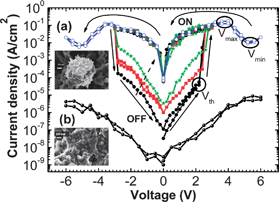Electrochemical fabrication of a nonvolatile memory device based on polyaniline and gold particles
Abstract
In this work we describe a simple electrochemical process to fabricate an air stable nonvolatile memory device based on polyaniline (PANI) and gold (Au) particles in one step. The PANI and Au particle composite material was synthesized by


 Please wait while we load your content...
Please wait while we load your content...